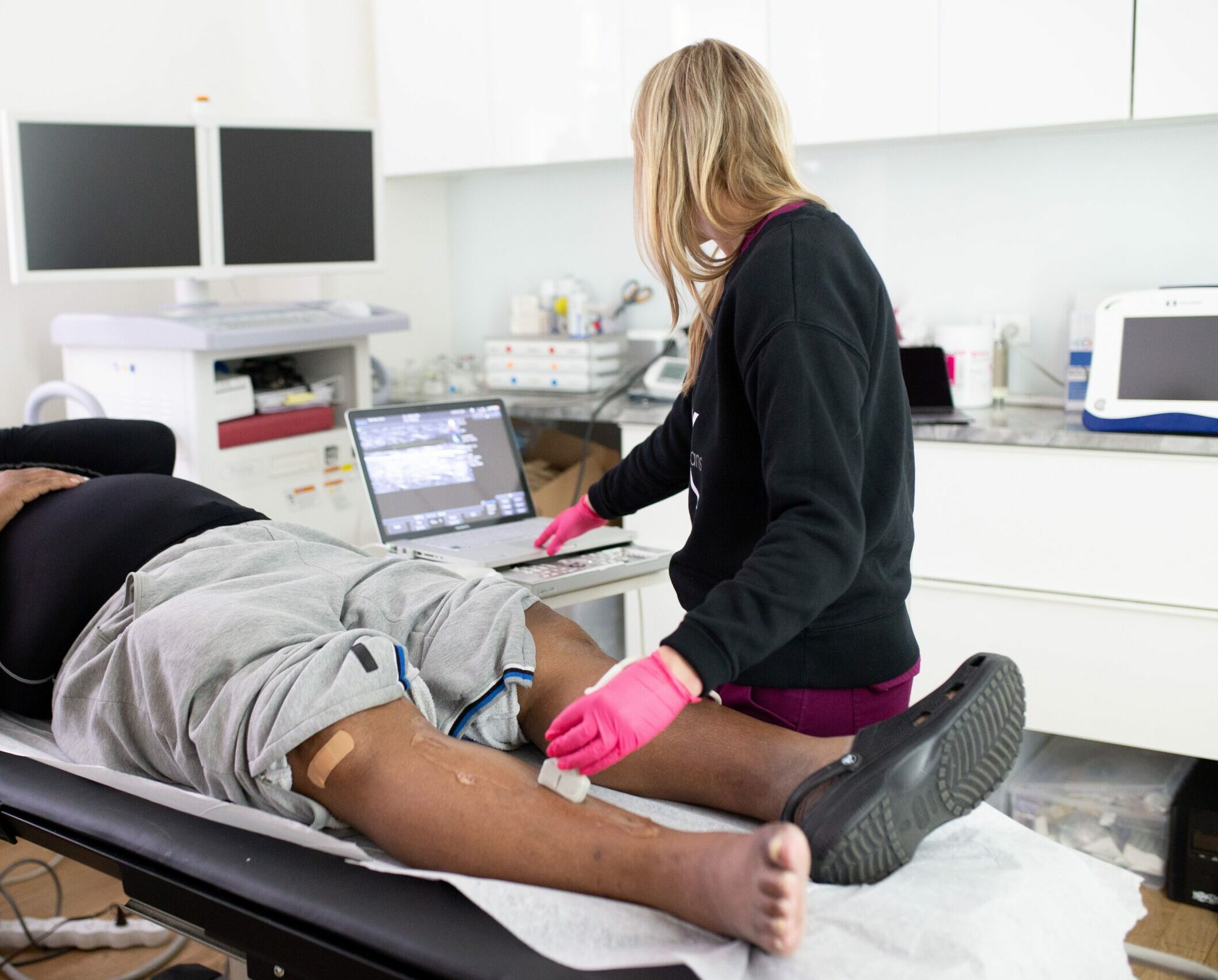Venaseal
VenaSeal is a minimally invasive treatment for chronic venous insufficiency and varicose veins. Venous insufficiency is a chronic condition wherein the collapse of your vein valves makes blood flow backward and accumulate in the leg veins. This leads to leg heaviness, fatigue, exhaustion, restless leg syndrome, and non-healing wounds on the legs (ulcers).
However, most people realize they have chronic venous insufficiency when they identify varicose veins, i.e., large, twisted, and knotted blood vessels that protrude from the skin’s surface. Over time, the blood inside the varicose veins may clot and harden, leading to deep vein thrombosis. If the blood clots break, they may travel to your lungs, which can be potentially fatal.
How Does VenaSeal Work?
VenaSeal, short for VenaSeal Closure System, is a minimally invasive treatment for chronic venous insufficiency.
During the VenaSeal procedure, the vein doctor makes a small incision on the skin’s surface to insert a catheter under ultrasound guidance. This allows the vein doctor to visualize the diseased veins while guiding the catheter. Once the catheter is lodged in place, the vein doctor injects a medical-grade adhesive into the diseased vein. Upon contact with blood, the VenaSeal adhesive induces fibrotic growths, sealing the diseased vein shut.
Over time, the diseased vein hardens into a scar tissue and gets metabolized by the body. The accumulated blood reroutes into healthier leg veins, restoring effective blood circulation.
VenaSeal is one of the safest procedures for chronic venous insufficiency. It doesn’t involve thermal energy, thus eliminating the risk of nerve injuries and harsh side effects. Furthermore, you can resume your daily activities immediately, and you don’t even have to wear compression stockings or bandages.

Your Expectations from VenaSeal
- No downtime after the VenaSeal procedure.
- Resume work and daily activities immediately after the treatment.
- Your legs may feel firm for a while because of the hardening of the veins.
- No need for compression stockings or bandages after the procedure.
- You can get your legs wet.
- You can also resume swimming and other similar activities, which would be inadvisable after other vein treatments.

VenaSeal: Side Effects and Success Rate
Side Effects of VenaSeal
VenaSeal is the safest vein treatment available with minimal side effects and negligible risk of complications. Furthermore, you can significantly reduce the risk by consulting reputable vein clinics in New York for a diagnosis and treatment.
The following are the possible side effects of VenaSeal:
- Mild irritation around the veins.
- As the veins harden, you may feel tightness in your legs.
- Negligible (and rare) risk of perforation, vascular rupture, or allergic reactions.
VenaSeal Success Rate
VenaSeal is a permanent procedure with a nearly perfect (99%) success rate. As such, there’s no need for additional treatments.
VenaSeal is the ideal treatment for varicose veins and chronic venous insufficiency because it concludes within 30 minutes, involves no downtime, and allows you to resume your daily activities without compression stockings or bandages. Most patients seek VenaSeal treatment during their lunch break, so they don’t even take a day off work.
The experts at our vein clinics in New York have performed hundreds of VenaSeal procedures without complications. We use the most effective techniques to ensure a safe and comfortable experience. If you have the signs or symptoms of vein disease, reclaim your confidence and comfort by scheduling an appointment today.
Not sure if you’re covered?
Try our FREE Health Insurance Coverage Checker by filling out this form:
Contact us
Call us
Speak with one of our team members right away to get answers about insurance coverage, scheduling an appointment, and our vein clinic locations (332) 263-4887.
Book online
Request an appointment at any of our New York Vein Clinics by visiting our Book Appointment page. Before your visit, we offer free insurance verification.
Get directions
Learn how to easily get to the NY Vein clinic nearest you.